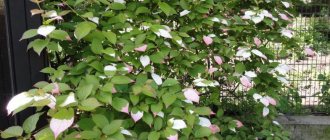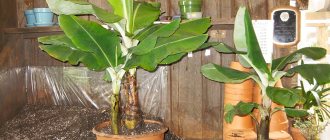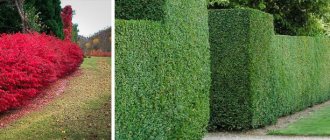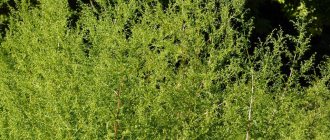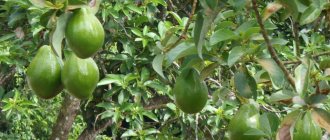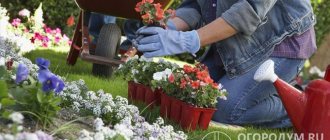- November 24, 2018
- Wild plants
- Michael
Probably, many readers have heard about such moss as sphagnum. It is not surprising - it is found in many regions of our country and is actively stocked by experienced flower growers. And in general, the scope of its application is quite wide. Therefore, it will be useful to tell you how sphagnum moss is used and where it grows. The photos attached to the article will allow you to learn more about him.
Appearance
Now it’s worth telling what sphagnum moss looks like - the photos still give only a fairly superficial idea.
He cannot boast of a particularly outstanding appearance. It has a very thin green stem that starts at the root and stretches upward. It is distinguished by its emerald green color. The upper part is covered with small leaves arranged in a spiral. By the way, for the sake of clarity, it should be noted that this moss actually has no roots. And that brown part, which not very experienced botanists perceive as a root, is an old, dead part of the plant.
Sphagnum, despite its small size, is a perennial plant. As cold weather approaches, it freezes to continue life in the spring. It only grows upward, not sideways. The lower part dies over time, rots, becoming peat.
The stems grow very densely, most often in damp places. Because of this, only the upper part receives the light necessary for the development of green plants. And in the lower, shaded area, chlorophyll is destroyed over time, and it becomes white. Over time it rots, turning brown.
It reproduces, like most mosses, with the help of spores. They contain germ cells grown on the stem. After ripening, the sac bursts, and thanks to water and wind, light spores are carried over a considerable distance.
Monosolenium tenerum and riccia
Monosolenium tenerum is almost never found in the wild. It is purposefully grown in small quantities in Taiwan, India and China. This species is extremely beautiful and has a remarkable feature - it has no leaves at all.
Typically, Monosolenium tenerum is located on the surface of the water and multiplies quickly and easily, covering all available free space.
This plant has one significant disadvantage - it is very fragile and difficult to transport. But with the help of a haircut, this moss can be given even the most bizarre shape.
This plant is most common in tropical, subtropical and temperate climate zones.
These mosses play a mainly decorative function and are intended for breeding in aquariums. Water for breeding Riccia should be warm (from twenty to thirty degrees Celsius). Hardness is moderate - from 2 to 8 dH. In such conditions, Riccia grows and reproduces very easily.
You should carefully monitor the lighting - it should not be dim, but not sunny. Unlike many aquarium plants, this moss does not require mineral feeding, which is very convenient for beginners. Riccia feeds on waste products of aquarium fish. It is important to take into account one condition - you should not attach the riccia with fishing line, this will not allow it to grow, and it will die in a few weeks.
Mosses are extremely useful plants for both decoration and everyday life. They perform several important functions:
- Development of lands with an unfavorable climate. Mosses, as a rule, are not picky about their maintenance conditions and are able to initiate the development of flora almost anywhere.
- Regulating the water balance in the soil and ensuring an increase in its fertility.
- They are a source of fuel - peat.
- They are widely used in medicine for the manufacture of disinfecting dressings and preparations, antibiotics, and migraine remedies.
- They accumulate radioactive substances and help the ecosystem maintain normal background radiation.
- They are an important link in many food chains.
- They beautifully decorate the aquarium and create a favorable environment for ornamental fish.
Thus, all several thousand species are useful to humans and the environment in one way or another.
Where is it found?
Now it’s worth telling how to find sphagnum moss in nature - photos will help you easily identify it.
This valuable plant is most often found in the north of our country. Moreover, mainly in forest thickets, where high soil moisture is provided by small rivers and lakes, as well as streams and swamps.
Sphagnum is surprisingly unpretentious. Even weak, diffused sunlight is enough for it to develop successfully. In addition, it grows well on all surfaces: stones, clay, trees, earth, even glass and iron.
However, if we tell you where sphagnum moss grows in Russia, a photo of which is attached to the article, then it is worth noting that it can also be found in the steppe. But this place should be very wet - for example, somewhere near streams or lakes.
What is forest moss?
It is believed that mosses are one of the firstborns of the plant world that appeared on planet Earth approximately more than 300 million years ago. There are about 10 thousand species, which are combined into 700 genera, and they will include another 110-120 families.
Mosses are plants that do not have a root system, but can grow on almost any surface if they can attach to it. The home for growth can be:
- trees;
- stones;
- land plots;
- walls and roofs of houses;
- building foundation.
Although, in order for mosses to grow on designated surfaces, there must be a source of moisture present. For example, moss may appear on the wall of a house due to a leaking drainpipe, and the foundation often becomes overgrown if water often collects near it.
How it is used
Not every person who has seen a luxurious sphagnum carpet in the forest realizes how wide the scope of this amazing plant is. But people have learned to use it in construction, crop production, cosmetology and even medicine.
Thanks to a number of features, moss becomes a truly unique material. To begin with, it should be noted that it perfectly allows air to pass through, absorbing excess moisture from it, and dry, on the contrary, moisturizes to a comfortable level. Experts say that moss absorbs a huge amount of moisture - 20 times more volume than it has itself! Can any other material boast such an indicator of moisture absorption?
It is also very important that it has antiseptic properties. This allows it to be used in medicine, mainly in extreme medicine.
However, in order for the reader to better understand the topic, it is worth giving a few specific examples.
How to put forest moss to good use in your garden
From the noted beneficial properties of moss, it becomes clear that it can be used in your summer cottage in any variation. But specifically, what ways of using it will be beneficial directly in the garden? Let's look at the main ones.
Mulching
You can mulch garden crops, but only those that like acidified soil. This way you can not only fertilize, but also get rid of grass.
Planting seedlings
To ensure comfortable growth for seedlings, it is recommended to use moss by adding it to the soil where seeds of garden (vegetables) or garden crops (flowers) were sown. Thanks to this mixture, the plants will have stable soil moisture, and this will also protect the seeds or root system of seedlings from rotting if the soil is too waterlogged during watering.
Weed removal
The dense surface of moss does not allow any weeds or any other plants to grow, so it should be planted with already grown crops.
Soil disinfection
Since moss is considered one of the best natural antiseptics, it can be used not only as a fertilizer, but also as a means to eliminate:
- various fungal diseases;
- development of bacteria;
- mold formation.
To do this, it is brought into the ground and dug up. A similar procedure can be performed either in the fall to prepare the beds for planting in advance, or in the spring the soil is dug up before planting the seedlings.
Aerated compost tea for the joy of plants: rules for preparing and using fertilizer
Insulation
Moss has excellent thermal insulation properties, so it can be used to cover plants in the garden that do not tolerate cold well or are facing a harsh winter. It will be enough to sprinkle the soil in the garden bed around the plant with dry moss.
Why do flower growers need it?
Most often, when talking about the use of sphagnum moss, a photo of which is attached to the article, people remember indoor plants. It is really actively used in caring for flowers.
First of all, it’s worth talking about help with seed germination. They need to be kept in a humid environment. However, fabric, not to mention paper, dries very quickly. You have to moisturize it every day, and sometimes several times a day. Sphagnum moss solves this problem - moisten it generously and wrap the seeds in lush greens. After that, you can forget about them for several days. The moss will quickly absorb excess moisture, so rot does not threaten the seeds. But then it will give them excess moisture and they will not dry out.
Due to this same effect, moss is actively used when caring for plants in pots. You need to lay a thick layer of sphagnum directly on the soil, after which you can water the flowers not daily, but once a week. At the same time, moss will protect plants from bacteria and infections that carry diseases. It has long been noted that sphagnum, which has antiseptic properties, does not allow the appearance of mold and fungi in its vicinity.
In addition, the soil underneath becomes looser and softer. As a result, it is better saturated with oxygen, and the plant grows faster.
In addition, with the active growth of moss, its lower part will die off, this has already been mentioned above. As a result, dead areas turn into peat - an excellent fertilizer for any plant.
Liver mosses
What is liver moss? This is the oldest variety, a prominent representative of which can be considered the pilosebaceous blepharostoma, which has a characteristic flat, spreading shape. Most mosses of this species have both true leaves and stems. Most often, this type of moss grows on the soil, on dead wood, stones along the banks of rivers and streams, on stumps, forming loose and dense, in combination with other bryophytes, tufts and extensive carpets.
Another large class consists of bryophytes. All of them, in accordance with the structure of the leaves, stems and the method of fixation in the ground, are divided into orders. This type of moss forms dense cushions ranging from several millimeters to several centimeters in height, often covering vast areas with a dense carpet.
Application in medicine
Historians are well aware that during terrible wars like the Great Patriotic War, sphagnum saved the lives and health of many soldiers and officers. There was a catastrophic shortage of simple antibiotics, bandages and cotton wool, so experienced doctors used sphagnum moss. Clean bundles were placed directly on the wound, after which they were rewound with any fabric, often not even sterile. Sphagnum destroyed harmful bacteria around it. Thanks to this, the wounds healed faster. It is no coincidence that earlier detachments were formed from pioneers and Octobrists, which prepared this raw material and sent it to the front.
It can also be used at home. Do you suffer from nail or foot fungus? Put some moss in your shoes and solve this problem forever. Moreover, without purchasing expensive drugs with questionable effectiveness.
You can take baths with sphagnum moss. Steam 100 grams of moss with three liters of boiling water, leave overnight and pour into a bathtub filled with warm water. Two half-hour procedures a week (just lie in the bath) and arthritis and arthrosis will recede, sweating will improve and excess salt will be removed from the body.
Stages of work
If you approach the issue of planning and carrying out the work of creating an alpine slide with your own hands correctly, this can be done in just one or two days. In order not to disassemble or remake the alpine slide in the future, adhere to important rules.
The process of creating a rock garden yourself can be represented in several stages:
- selection of location and layout of the alpine slide;
- creation of a drainage system;
- selection of stones of optimal sizes and their installation;
- preparing the soil for planting;
- planting shrubs and flowers.
Growing moss
Not everyone knows that sphagnum can be cultivated at home, and the procedure is surprisingly simple. It is enough to have at least a small piece of moss - you can find it in the forest, take it from friends or purchase it in a special store.
First, the sphagnum moss needs to be washed. To do this, soak it in warm water (preferably settled) and leave for half a day. Every few hours the moss needs to be lightly shaken to remove debris, soil and sand. After the time has passed, carefully remove the thin stems and pour out the dirty water.
Now you can start growing the plant. Place it in a three-liter jar or small aquarium. Pour some water, close the container and leave in a sunny place. During photosynthesis, oxygen will be produced, and dead stems will serve as a substrate and source of carbon dioxide. This will create a closed ecosystem from which you can sometimes take some of the moss and add a little water.
Spring
What was spring like earlier for village girls and women? Do not know? Yes, a kind of display of their property acquired over the winter. Everything, even undershirts and woven towels, was hung out for display, ostensibly for drying. This is how grooms often chose their brides. After all, ready-made things were rarely bought in those days. The girls and women wove, spun, sewed and weaved themselves. If the craftswoman was good, then she didn’t stay long with girls either. It was believed that such a housewife would always have wealth in her family.
Spring has come, and the courtyards in the village are full of bright embroidery and scarves. Vonga also took up drying the property. The village gasped. Featherbeds, baskets, and snow-white shirts occupied almost the entire Vongin yard. The question of where the orphan's wealth came from haunted the villagers.
Grandma told me that women secretly went to feel Vongin’s feather beds. Not everyone had a feather bed in the house. Even when I was little, we slept at my grandmother’s on mattresses filled with hay. And after a year of living in the village, Vonga got several feather beds, so how can the villagers not be surprised? And her baskets were special - thin and light, but so strong that there were many who wanted to buy them. Vonga immediately discovered the secret of her wealth, apparently, which is why the villagers quickly lost interest in it. She said that all her things were made of red moss , which is abundant in the forest. Even in feather beds there is not feather, but moss.
Harvesting sphagnum
If you find a variety of sphagnum moss in the forest (photos will help you identify it), then you can stock it for future use. It is best to collect valuable raw materials near streams or lakes in well-shaded places - these are ideal conditions, which means the plant will be of the highest quality.
You can collect all the moss along with the “roots”, then the process goes much faster. In addition, peat fertilizer will form faster, which is important for many gardeners.
Or you can carefully cut off the top green layer using simple scissors, leaving the white and brown in place. In this case, you will get a smaller volume of moss, but it will be alive and will be able to grow perfectly, quickly increasing in your small plantation.
Without a plan - nowhere
You will need a sheet of paper and a pencil. Draw what your slide will look like, its shape, and the composition of the vegetation. Where to get stones for an alpine slide, what kind, what shape, how many of them will you need? Estimate the amount of material for its construction. You also need to take into account such natural factors as the level of the terrain (whether you will need to make a slope or, conversely, an embankment). If it is assumed that the structure is one-sided, and its back side is adjacent to the fence, it would be logical to lay out a retaining wall made of stone and mortar there - at least just to save material. For example, below is a diagram of an alpine slide. You can make it with your own hands using this pattern.
We store it correctly
The rules for storing moss depend primarily on how you plan to use it.
Do you need dry sphagnum moss used in medicine? Then the easiest way is to use a cord or strong thread and hang the stems in a thin layer in a warm place with good ventilation. Well, or at least spread it out on a towel or newspaper and leave it on a windowsill well lit by the sun. Stir the moss a couple of times a day to ensure it dries evenly. Otherwise, the top will dry out and form a crust. Inside, the stems will remain damp and over time, mold may appear here, making the use of moss for medical purposes impossible.
A completely different storage method should be chosen if your goal is to keep it alive for the longest possible period. Coping with this task is not at all difficult. Rinse the moss well, then place it in a paper or cloth bag and place it in the refrigerator or freezer. In such conditions, it can easily be preserved for several years. When you need sphagnum moss, simply remove it from the refrigerator and leave it in a warm, slightly humid place. After a few hours, the stems will thaw, and after a few days they will continue to grow as if nothing had happened. But here it is worth considering that the longer the sphagnum lies frozen, the fewer stems will remain alive. It is advisable to remove the rest as soon as it becomes clear that they are dead. This is not difficult to determine - they dry out quite quickly.
Select a location
The first thing that anyone who is thinking about how to make an alpine slide with their own hands should pay special attention to is choosing the ideal place. This structure is always an accent, a point of attraction, so try to ensure that it has a good view from all sides. The chosen location should be illuminated by sunlight for most of the day. The southern side of the site is most suitable for implementing the planned plan. A noticeable place for arranging a slide will be the center of the lawn. But it all depends on various factors. Sometimes, due to the presence of trees or garden shrubs, a rock garden can be built at the edge of the site, near a fountain or pond, near a gazebo or along paths. The main requirement remains acceptable illumination. At the dacha, do not place the alpine slide in the shade of tall plants. Let the bushes and trees create just the background. It is necessary that these plants do not distract the eye from the hill with their colorful flowers. Choose monochromatic plants for the background.
Take into account the terrain features. It’s good if the alpine slides are integrated into natural elevations, lowlands or terraces.
Laying stones
The drainage is ready, and the area for the alpine slide is dry. It's time to start the stone laying process! There is a rule: the more compact the composition, the smaller the stones should be. Large boulders are ideal for an alpine slide, and small cobblestones are required for a small rock garden. There is no clear layout for installation. Follow only your own taste and maintain harmony.
Try not to use a lot of gray. For example, if you are using gray gravel, then choose larger stones of a different color. Let your alpine slide look natural and beautiful even without green spaces.
Lay out the tiers taking into account the fact that greenery will appear here in the near future. Each of the tiers is covered with a damp layer of soil. Naturalness and maximum closeness to nature can be achieved by creating a rock garden with alternating large stones and very small ones.
Create drainage
It is not only the type of soil that forces the creation of a drainage system. Excess moisture is harmful to most plants. A small foundation will help solve the problem of stagnant water. At the initial stage, you will need to remove the top layer of soil. The next action will be to fill the resulting depression with fragments of broken bricks and pottery, and crushed stone. Next, fill in coarse sand and soil. At the end of this work, generously fill the area allocated for the alpine slide with water. You can do everything with your own hands, the main thing is to want to.
Place
The novice gardener should be careful when choosing a site and very critically examine the site he likes. Of course, you can find the right plant for any soil and light conditions. But it’s better if you designate a spacious, sunny area for the future rock garden. Think about how to build an alpine slide with your own hands so that it is clearly visible from any angle. This will be the central composition on the site, and friends and relatives will probably want to look at it.
When choosing a location, find out what kind of soil is on the site. Sandy soil is the best option for creation. Clay - will require the construction of a drainage system before planting greenery.

